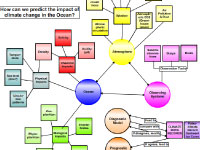|
|
Click Images to Enlarge
|
||||||||
Click Buttons for Presentation Videos & Maps |
About this Workshop:
For this workshop, 12 educators from the New England area were matched with ocean and climate scientists from the University of New Hampshire to improve their collective understanding of Earth's major ocean - climate systems. [more]
About this Scientist:
Janet Campbell is the director of the Center of Excellence for Coastal Ocean Observation and Analysis (COOA) at the University of New Hampshire. She also leads the Bio-Optical Oceanography Group, an informal team of research scientists and graduate students within the Ocean Process Analysis Laboratory. [more]












